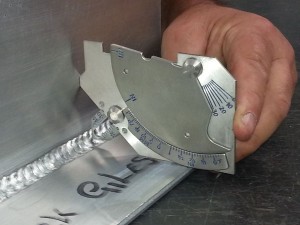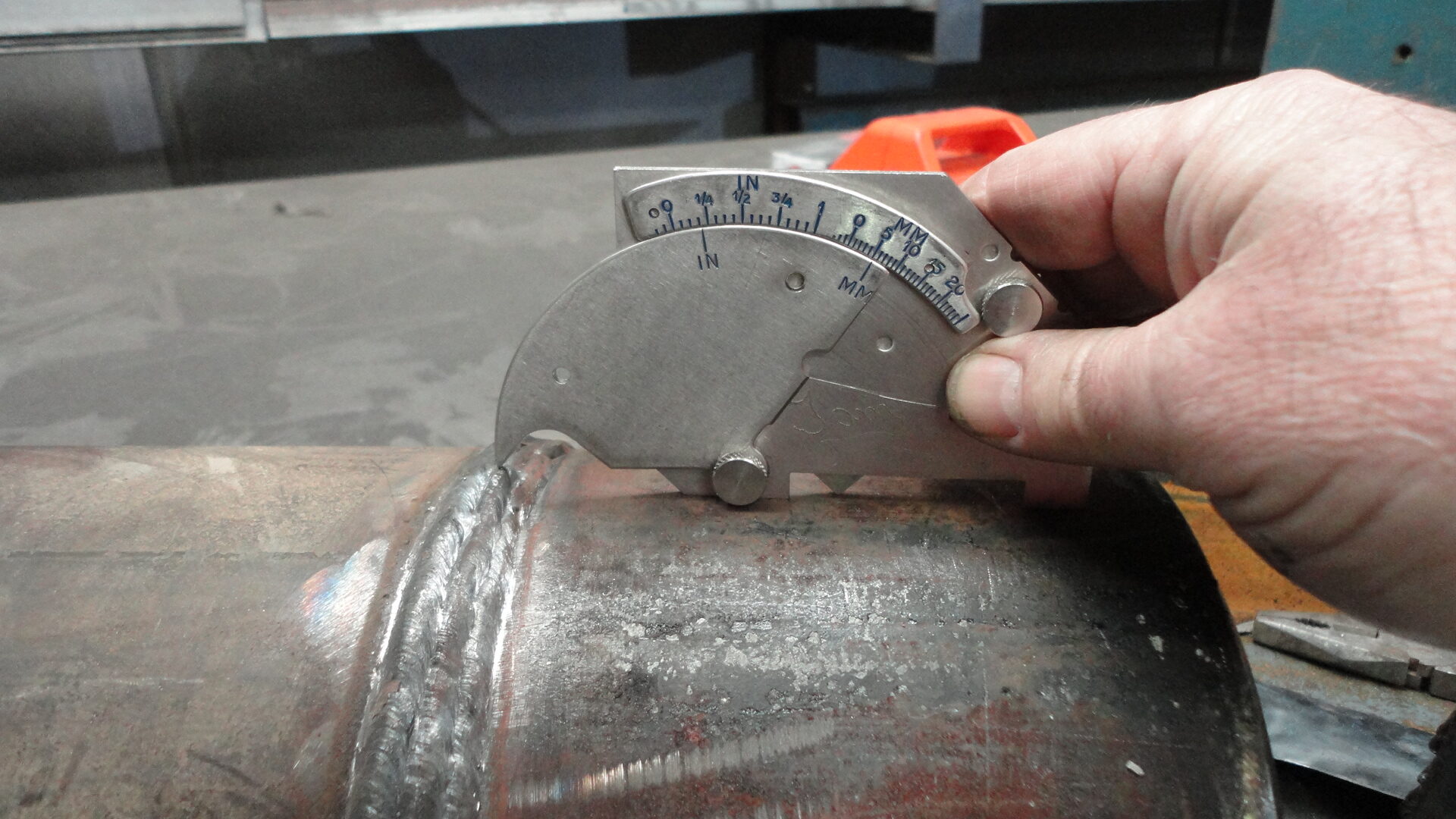Your Overview to Comprehensive Welding Inspection Milwaukee Solutions
Your Overview to Comprehensive Welding Inspection Milwaukee Solutions
Blog Article
An Extensive Checklist for Effective Welding Evaluation Practices
In the realm of welding, the integrity of structures is paramount, demanding an extensive method to assessment methods. A detailed list serves as an important device in making sure adherence to sector criteria, encompassing vital pre-welding, in-process, and post-welding examinations. By methodically addressing product verification, weld top quality, and comprehensive documents, organizations can substantially boost security and efficiency. What details aspects should be prioritized in each phase to achieve optimum results? Exploring these important parts can yield understandings that exceptionally effect welding procedures.
Understanding Welding Criteria
Welding criteria play a vital function in ensuring the top quality and safety and security of bonded components and structures. These criteria establish the criteria for products, treatments, screening, and inspection, therefore offering a structure for consistent top quality guarantee in welding procedures. Numerous organizations, including the American Welding Culture (AWS), the International Company for Standardization (ISO), and the American Culture of Mechanical Designers (ASME), have actually established detailed requirements that govern different facets of welding.
Comprehending welding criteria is important for professionals in the area, as adherence to these guidelines reduces the danger of flaws and failings in bonded joints. These criteria cover certain demands for weld high quality, consisting of acceptable tolerances, the sort of welding strategies to be utilized, and the certifications needed for welders and inspectors.

Pre-Welding Evaluation Actions
Prior to any type of welding procedure starts, an extensive pre-welding examination is vital to recognize possible concerns that may jeopardize the quality of the weld. This first action acts as a crucial foundation for guaranteeing conformity with relevant welding codes and requirements.
The initial action in the pre-welding examination is to confirm the products being utilized. Next off, it is crucial to evaluate the fit-up of the parts to guarantee correct positioning and joint configuration.
Additionally, examining the sanitation of the surfaces is vital; pollutants such as paint, oil, or rust can negatively affect the top quality of the weld. Following this, an extensive assessment of the welding tools should be performed, making sure that it is calibrated and in great working condition.
Lastly, examining the certifications of the welding employees is vital. Welders should possess the essential qualifications and experience to perform the details welds required for the project. By sticking to these pre-welding assessment actions, the likelihood of defects and failings in the final weld can be substantially lowered.

In-Process Evaluation Methods
In-process evaluation techniques play an important role in making certain the honesty and top quality of welds as they are being implemented. These techniques permit inspectors to recognize problems or discrepancies from specs in genuine time, consequently making sure and preventing costly repairs adherence to layout demands.
One key method includes visual examination, where examiners evaluate the weld bead for harmony, infiltration, and proper profile. This can be enhanced by the use of assesses to determine weld dimensions, guaranteeing compliance with established tolerances. In addition, the application of non-destructive screening (NDT) methods, such as ultrasonic screening or magnetic particle screening, during the welding procedure can view reveal subsurface flaws that may not show up on the surface.
An additional vital element is monitoring welding criteria, consisting of voltage, amperage, and take a trip speed. Consistency in these criteria is crucial for attaining optimum weld quality. Documenting these criteria throughout the welding procedure supplies a traceable record for future reference.
Educating employees in proper inspection techniques and the use of proper devices enhances the performance of in-process evaluations. By integrating these practices, organizations can attain higher quality welds, lower rework, and ultimately make sure the safety and reliability of bonded frameworks.
Post-Welding Top Quality Checks
Following the completion of welding procedures, post-welding top quality checks are crucial to validate that the welds meet all specified demands and requirements. These checks are important for ensuring the stability and resilience of the bonded joints. The evaluation procedure usually starts with a visual examination, assessing for surface problems such as fractures, porosity, or incomplete combination.
Subsequently, non-destructive screening (NDT) techniques, such as ultrasonic screening, radiographic testing, or magnetic bit testing, may be utilized to find internal imperfections that are not visible to the nude eye. Each approach has its unique benefits and is chosen based upon the weld's area, product type, and the nature of the application.
In addition, verifying dimensional precision is an important element of post-welding top quality checks. This includes determining the weld's alignment, size, and account to make sure compliance with engineering specs. Finally, assessing the mechanical buildings of the weld, consisting of tensile stamina and ductility, can offer further guarantee of efficiency under functional problems. In general, thorough post-welding evaluations are crucial for keeping performance, adherence, and safety and security to governing and market standards.
Documentation and Reporting
Just how go to website can efficient documents and reporting improve the welding assessment process? Exact documentation and comprehensive coverage are crucial parts that make sure the honesty and top quality of welding operations. Welding Inspection Milwaukee. They act as an official document of inspection findings, assisting in accountability and traceability in conformity with industry requirements

A well-structured coverage system allows inspectors to clearly communicate any kind of areas, non-conformances, or inconsistencies needing renovation. This transparency fosters a setting of continuous improvement, as stakeholders can easily assess previous performance and implement rehabilitative actions.
Furthermore, reliable documentation consists of in-depth records such as welding treatment requirements (WPS), welder qualifications, and inspection checklists. These components give a structure for assessing weld high quality and adherence to developed standards. In case of disputes or high quality issues, comprehensive documentation works as a reputable reference, decreasing ambiguity and protecting all celebrations entailed.
Last but not least, keeping organized records helps in training and accrediting employees, guaranteeing that market finest methods are promoted. Eventually, thorough documents and reporting not just enhance the welding examination process yet additionally contribute to the total safety and security and integrity of bonded structures.

Conclusion
To conclude, a thorough checklist for reliable welding assessment techniques is crucial for ensuring high quality and safety in welded structures. Adherence to developed welding standards, thorough pre-welding evaluations, strenuous in-process examinations, and extensive post-welding quality checks collectively add to the integrity of welded joints. Furthermore, persistent documents and reporting of assessment findings boost responsibility and promote continual renovation. Executing these practices will substantially aid in compliance with market standards and ultimately foster a society of quality in welding procedures.
Welding standards play an essential role in ensuring the high quality and safety and security of bonded frameworks and parts. Various organizations, consisting of the American Welding Society (AWS), the International Organization for Standardization (ISO), and the American Society of Mechanical Designers (ASME), have actually established comprehensive standards that regulate various elements of welding.
Following the completion of welding procedures, post-welding top quality checks are crucial to confirm that the welds satisfy all specified demands and standards - Welding Inspection Milwaukee.In conclusion, a comprehensive checklist for efficient welding examination practices is essential for ensuring high quality and security in welded frameworks. Adherence to developed welding criteria, meticulous pre-welding evaluations, extensive in-process assessments, and thorough post-welding quality like this checks collectively add to the stability of bonded joints
Report this page